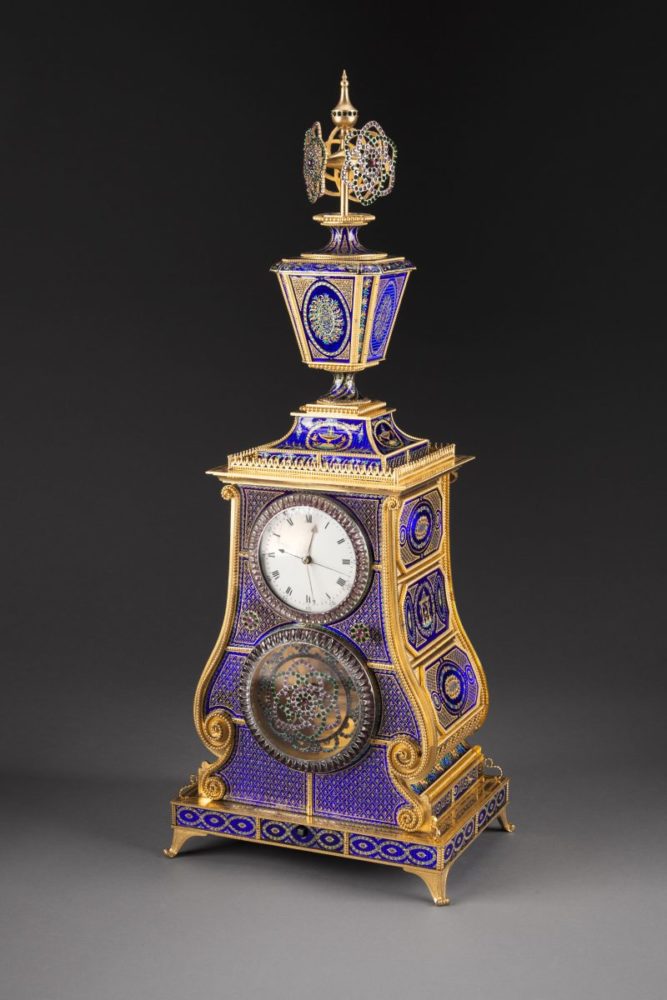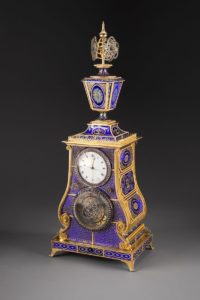Fall 2017
Perfect Time
When Hurricane Katrina struck in 2005, a 200+ year old clock was undergoing restoration in a New Orleans repair shop. It was completely submerged in floodwater.
Published: September 22, 2017
Last Updated: February 8, 2019

Recently installed in the second-floor Elise M. Besthoff Charitable Foundation Gallery on NOMA’s second floor as part of a reimagined Decorative Arts department, the clock is a Katrina survivor. NOMA acquired the automaton clock in 2001 as a bequest from the collection of Mr. and Mrs. Robert C. Hills. When Hurricane Katrina struck in 2005, the clock was undergoing restoration in a New Orleans repair shop. The disassembled clock was submerged in floodwater. In 2015 the piece travelled to London for a meticulous, yearlong conservation project supported by the Besthoff Foundation.
Specialists stabilized the ormolu (gilt bronze) and enamel panels and, most critically, dismantled and repaired clockworks that had been corroded by waterborne dirt. The restored clock can now keep perfect time, play a series of chime tunes, and spin its jeweled ornaments.
As part of the new installation, an ArtTab digital tablet developed by NOMA will show the clock’s movements and melodies as it strikes the hours. The ArtTab explores the specialized crafts of the clock’s body and inner workings, its recent restoration, and how such clocks were used as part of eighteenth-century British–Chinese diplomacy. Videos on the tablet will show musical automata from other museum collections, charting the increased sophistication of these spring-driven timepieces.
The first clocks in medieval Europe were powered by hanging weights and mostly found in public clock towers and cathedrals. Smaller clocks, powered by a coiled spring, first appeared in the 1400s. In addition to timekeeping, their spring-driven mechanics could power “automata” like dancing animals and other enchanting curiosities. Such clocks also represented a dramatic technological leap, one that led to the mechanical calculators of the Victorian era, and eventually to modern computing.
Automaton clocks were made in Europe, but often intended for Asian markets. The cartoon, pictured here, pokes fun at the 1793 meeting of the Chinese Qianlong Emperor and Lord Macartney’s Embassy, which was Britain’s first diplomatic effort with China. Macartney’s mission aimed to facilitate trade through deregulation and the establishment of an English embassy in Canton (Guangzhou). This caricature shows gifts offered to the Emperor, including a clock next to a miniature painting of Britain’s King George III. Despite the gift, the Chinese denied all requests and ejected Macartney from the court two days later.
—
Mel Buchanan is the RosaMary Curator of Decorative Arts and Design

